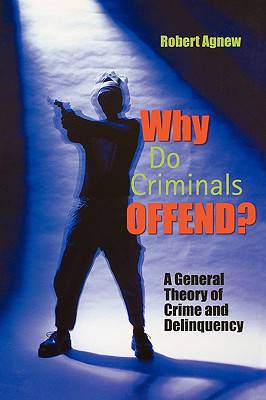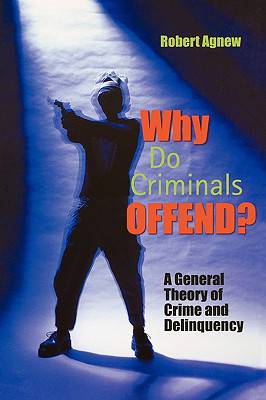
En raison d'une grêve chez bpost, votre commande pourrait être retardée. Vous avez besoin d’un livre rapidement ? Nos magasins vous accueillent à bras ouverts !
- Retrait gratuit dans votre magasin Club
- 7.000.000 titres dans notre catalogue
- Payer en toute sécurité
- Toujours un magasin près de chez vous
En raison de la grêve chez bpost, votre commande pourrait être retardée. Vous avez besoin d’un livre rapidement ? Nos magasins vous accueillent à bras ouverts !
- Retrait gratuit dans votre magasin Club
- 7.000.0000 titres dans notre catalogue
- Payer en toute sécurité
- Toujours un magasin près de chez vous
Why Do Criminals Offend?
A General Theory of Crime and Delinquency
Robert Agnew
Livre broché | Anglais
218,95 €
+ 437 points
Description
This book focuses on what is probably the most frequently asked question about crime: Why do criminals offend? Renowned criminologist Robert Agnew draws on a broad range of crime theories and the latest research to present a general theory of crime and delinquency, rich with student-accessible examples. The general theory integrates the essential arguments from social learning, social control, self-control, strain, labeling, social support, bio-psychological, and other theories. And it draws on the latest research examining the relationship between crime, individual traits, and the social environment--including family, school, peer, and work environments. Agnew's general theory is concise and written at a level readily accessible to undergraduates. It provides a good sense of the major causes of crime and how they mutually influence and interact with one another to affect crime. Key points are illustrated with examples from qualitative and quantitative research, and each chapter ends with a set of thought-provoking discussion questions. While the book focuses on explaining why some individuals are more likely than others to offend, the general theory is also used to explain group differences in crime rates and patterns of offending over the life course. Further, the theory is used to evaluate current efforts to control crime and suggest new crime control initiatives.
Spécifications
Parties prenantes
- Auteur(s) :
- Editeur:
Contenu
- Nombre de pages :
- 246
- Langue:
- Anglais
Caractéristiques
- EAN:
- 9780195330465
- Date de parution :
- 11-08-04
- Format:
- Livre broché
- Format numérique:
- Trade paperback (VS)
- Dimensions :
- 152 mm x 229 mm
- Poids :
- 381 g

Les avis
Nous publions uniquement les avis qui respectent les conditions requises. Consultez nos conditions pour les avis.






